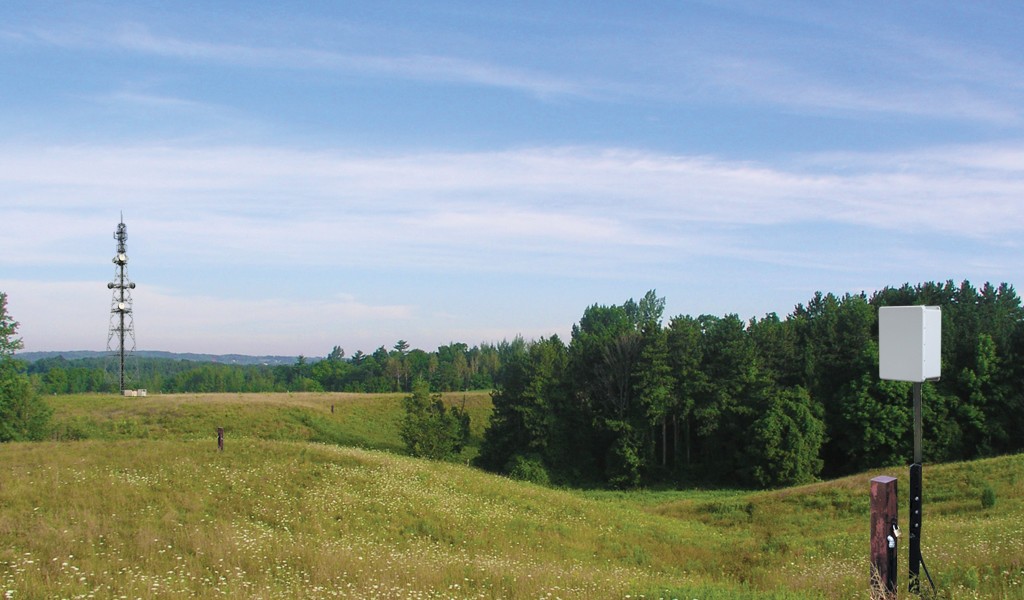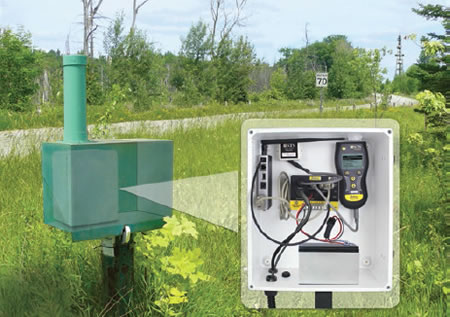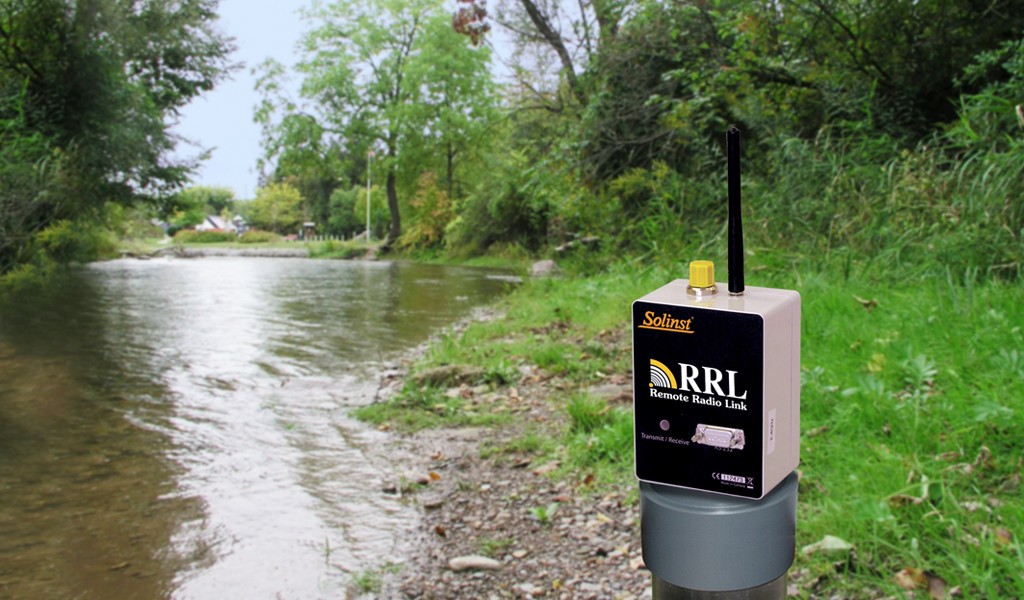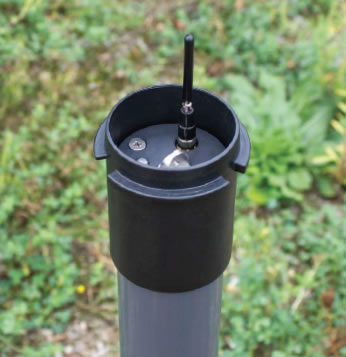Whether you believe it’s a natural cycle or global warming-induced, it’s hard to ignore the signs of climate change. The weather has been extreme the last few years, punctuated by “superstorms”, flooding, and widespread droughts.
It’s not just these sudden extreme events that are concerning, but issues of long-term resource sustainability are becoming more apparent. In order to predict imminent events and future resource availability, there needs to be a continuous supply of data.
Water Resource Management
Sustainable water management programs aim to protect water resources by ensuring that the quality and quantity remain suitable for future generations. Many programs are being introduced around the world, at varying scales – regional to countrywide.
Continuous monitoring of water levels has become an important component of these programs. Water level monitoring networks are expanding, and more convenient and efficient methods of data retrieval are being deployed.
Telemetry Technology
From water level meters to water level dataloggers, to telemetry…
Telemetry systems provide a means to access remote water level data, cutting out the need to travel so frequently to a monitoring site. Constant, detailed data is sent from the field directly to your office computer, or even to your smartphone or tablet.
Overall, telemetry systems provide numerous advantages, including:
- Long-term cost savings
- Eliminating the need for manual data collection
- Frequent and scheduled access to detailed data
- Early detection and resolution of problems
- ‘Round-the-clock’, accurate, high-resolution data for confident decision-making
Access to real-time water level data allows extreme events, such as floods, to be monitored and reacted to immediately. Accurate data is available when you need it and alarm notifications can be automated, which allows informed decisions to be made as required.
Continuous water level data helps determine baseline, annual, and long-term changes in groundwater storage, estimate recharge rates, and determine the direction of groundwater flow – providing data for sustainable management.
Solinst Telemetry Systems
Solinst offers four different types of telemetry systems. Your water level measurement application will dictate which one you choose.
The newest Solinst telemetry system is the SolSat 5 Satellite Telemetry. The SolSat 5 is designed to work with Levelogger 5 Series absolute water level dataloggers and the LevelVent 5 vented datalogger. SolSat 5 uses Iridium satellite technology and low-cost TextAnywhere global satellite messaging to send remote data to a secure web portal. It features a robust weatherproof enclosure, built-in Wi-Fi setup app, solar panel, and barometer.
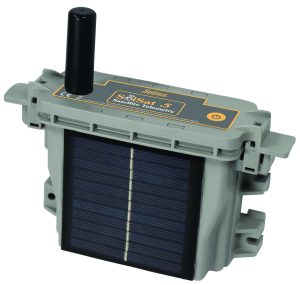
Model 9700 SolSat 5 Satellite Telemetry
Another more recently developed Solinst telemetry system is the LevelSender 5. The LevelSender 5 is designed to work with our Levelogger Series of absolute water level dataloggers (as well as our LevelVent 5 vented water level dataloggers). It is inexpensive, compact, and simple to operate. It uses 4G LTE-M cellular communication to send remote water level data to your email, or as a text message to your smartphone.
Our original telemetry system is the STS. It has undergone upgrades over the years and will continue to evolve. The STS uses a 4G LTE cellular modem to send remote data to a home station computer with a static IP address. It is the more robust of the systems, with more programming options and remote diagnostic and update capabilities.
A case study focusing on the use of Solinst STS Systems can be read in this previous blog post: https://www.solinst.com/onthelevel-news/2015/10/solinst-telemetry-helps-assess-drought-conditions-in-north-carolina/
Solinst also offers a simple radio telemetry system, the RRL (Remote Radio Link). The RRL sends remote data from a field radio to a home station computer with a connected receiving radio. This system is ideal for small, closed-loop applications.
Note: an update to the current RRL System is in the works!
Which Solinst Telemetry System Do You Need?
Note, for a quick reference, check out our Telemetry Overview document which has a helpful chart showing the significant differences between each Solinst telemetry system.
Here are a few questions to narrow down which system will work for you:
How large will your monitoring network be?
If you are monitoring a smaller contained area right on site, such as a golf course or landfill, the RRL System could work for you. The RRL uses radio communication that relies on line-of-site (up to 20 miles (30 kilometres). The advantage of radio communication is free airtime. Other systems require setting up a cellular account with a wireless carrier, or a TextAnywhere plan, and therefore monthly account fees. With no wireless carrier involved, you have complete control of a closed-loop network.
Note: recent updates to the LevelSender 5 and STS have made it easier to set up a cellular account directly through Solinst. The Solinst SIM is a low-cost, simple option! TextAnywhere is also set up through Solinst.
If you are monitoring over a larger area (e.g. a watershed or river basin), or there is not sufficient line-of-site, then the LevelSender or STS is the way to go. These systems use cellular communication, so wherever there is a good cellular signal, you can use them. The LevelSender is the simpler and more affordable of the two.
If you are monitoring in a location where there is no cellular signal, or you are covering a very large range, then the SolSat 5 is your choice. It uses Iridium satellite technology for global connectivity – and at a reasonable cost!
Do you need an option that allows discreet installation?
The LevelSender 5 is designed to fit inside a 2″ well casing. Its small size makes it easier to deploy. You can connect a Levelogger and a Barologger to one LevelSender. (An STS or RRL System allows the connection of up to four data loggers.) The LevelSender 5 also has an internal barometer, so you can optionally receive automatically barometrically compensated water level data, without the need for a Barologger.
The SolSat 5 also features a very compact, weatherproof housing that can be mounted almost anywhere. The SolSat 5 can only connect one Solinst datalogger, but it also features an internal barometer, so you can optionally receive automatically barometrically compensated water level data without a Barologger. It also features a convenient built-in solar panel to extend its battery life.
STS Systems need to be installed in a separate enclosure from the monitoring well. The RRL is the more compact of the two and can fit inside a 4.5″ well casing.
Do you want to be in control of your own data?
Something that the LevelSender, STS and RRL Solinst telemetry systems have in common is a dynamic database that is automatically created on your home station PC when you download the telemetry system software.
The database is appended with each new data report from the remote telemetry system. The database can be accessed and queried using your own macros or program, to post the data to a website or any method of your choice to display the data.
You have complete control of your own data.
The LevelSender uses an SQLite database, while the STS and RRL use a Microsoft Access database. The LevelSender 5 also provides the option of exporting data to an FTP server.
The SolSat 5 also allows complete control of your data. Data is sent via TextAnywhere messaging to a secure web portal where you can view and export the data. The SolSat 5 also has an internal wrap-around memory for 100,000 data points, and you can download the data from the SolSat 5 using the Wi-Fi App.
Do you want your Levelogger data to automatically be barometrically compensated?
If you are using an STS or RRL System, the PC software program allows you to select a Barologger that will be used to compensate your Levelogger data automatically.
As mentioned previously, the SolSat 5 and LevelSender 5 have built-in barometers that can be used in place of a Barologger. Although very convenient and ideal in some scenarios, compensation may not be as accurate as with a Barologger.

Levelogger 5 and Barologger 5 Dataloggers
Do you want to get data sent regularly right to your smartphone?
If so, you’ll want to select LevelSender 5 telemetry. The LevelSender is designed to send data to your home station PC database, your email, and as a text message to a smartphone.
Although, SolSat data can also be accessed on your smartphone using a browser to log in to your secure web portal. You can also download data to your smartphone using the SolSat 5 Wi-Fi App.
Do you want two-way communication between your home station and your remote telemetry station?
All Solinst telemetry systems allow this. Updates to the data collection schedule at the remote station can be sent from the home station PC Software or SolSat 5 web portal. You can also set the connected dataloggers to record in their internal memories, and change their recording schedule remotely for the LevelSender 5 and STS and RRL systems. The PC Software programs also allow you to stop/suspend or start a remote telemetry system, and the connected dataloggers, from the home station.
From the remote station, in addition to the water level data, each report also includes information about the status of the remote station, including battery level. Features like this also help cut down maintenance and the need to travel to the monitoring site.
Do you want to set up alarms for high or low water levels?
With the SolSat 5, STS and LevelSender 5, you can set alarms for high and low water levels. An alarm notification will be sent to your email when the set level has been detected.
Also, with the LevelSender 5, if you are not at the home station PC, you still have access to your water level data through your email or text messages. A more frequent data-reporting rate allows you to track these kinds of events more closely (although may require more power). Similar to the SolSat 5 – you can access your secure web portal from any device browser to view your data.
Water Resource Sustainability
Telemetry technology has made the collection of continuous water data more convenient and efficient. Access to this data allows government agencies, municipalities, watershed professionals, etc. to make informed management decisions.
Ongoing data improves land-use planning and allows water-use programs and policies to be developed, in addition, real-time data allows quick decisions to be made based on current conditions. All of this ultimately leads to the sustainable management of water resources.
To learn more about Solinst telemetry options, contact one of our Technical Representatives and they’ll be happy to answer any more questions you may have.

